From hand to hand. The fate of the Romanian destroyers type "Merasht." Part two
And if in the first part I tried to describe everything that is connected with technical aspects step by step and in as much detail as possible, then in the second part I post everything that I managed to find in Romanian, Italian, Spanish and English sources about the combat path of each ship and some forgotten, but interesting and even funny events that happened to them during the first half of the last century.
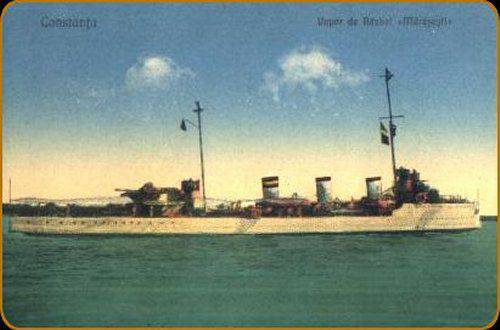
Aquila .
Name. Aquila (Latin aquila - “eagle”) is a large bird of the hawk family. Another meaning: the sign of the legion in the ancient Roman army in the form of an eagle, made of silver or gold and placed on a pole. Aquila, the symbol of the eagle, was surrounded by religious reverence, for the eagle was considered a symbol of Jupiter. The loss of aquila on the battlefield was considered a terrible disgrace (the legion that had lost the aquila was subject to disbandment), so the Roman soldiers were ready to die in order to return the symbol.
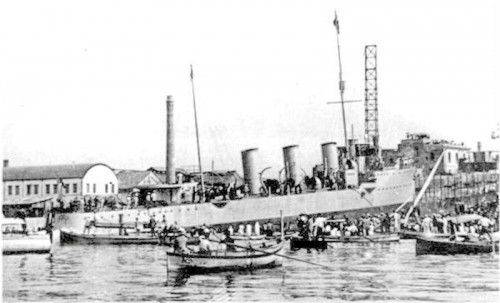
Aquila is the first of the 4's built ships of this series. It came off the stocks in July 1916 and was commissioned in February 1917. During the Great War was sent to the Lower Adriatic (Brindisi). He was a member of the 3 reconnaissance group and, with the active participation of torpedo boats of the MAS type, conducted raid operations in the region of the Austrian (now Croatian) coast of the Adriatic Sea. MAS (abbreviation from Italian. Mezzi d'Assalto) - assault weapons or “Motoscafo Armato Silurante” - armed torpedo boats.
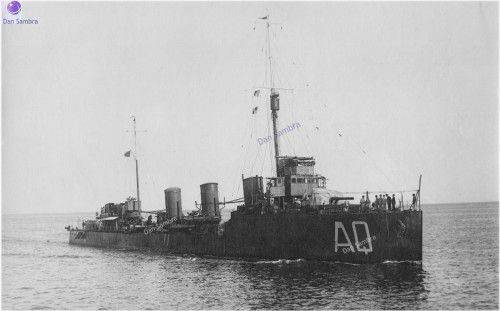
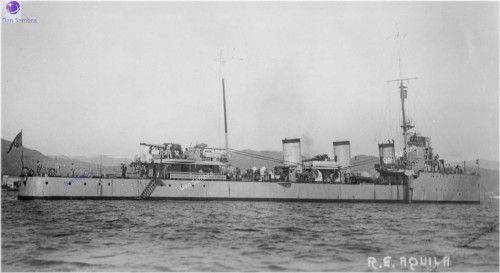
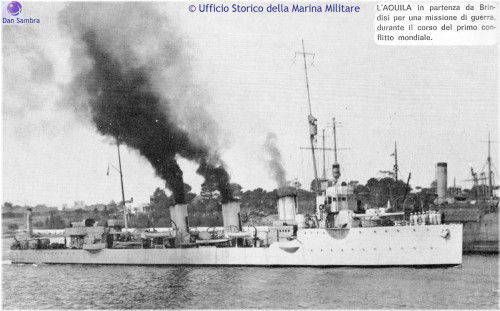
To ensure their actions, the seaplanes carried out aerial reconnaissance, looking for suitable targets. To the base of the enemy torpedo boats usually delivered the destroyers in tow. According to reconnaissance of seaplanes, MAS boats came out of Brindisi in tow by minonifer ships to attack enemy ships discovered in the roads. On the approaches to the raid, the boats were given tugs and at low speed followed inside the raid, where, after a brief search, they found the enemy ships. Torpedo boats launched torpedoes, and then they quickly found the destroyers and returned to the base in tow.
28 November 1917 scouts Aquila and Sparviero, interacting with the 9 destroyers (Animoso, Ardente, Ardito, Abba, Audace, Orsini, Acerbi, Sirtori and Stocco) and with several reconnaissance seaplanes, attacked and chased the Austrian crews that have slept discontinuations and have slept outdies that have put out of order from the sims. x destroyers (Dikla, Streiter and Huszar) and 3 torpedo boats that bombarded the railway near the mouth of the river Metauro. Italian ships had to interrupt the chase, as they went to the area of Capo Promontore, not far from the enemy naval base Pula (Pola is from 4 city in modern Croatia, on the western coast of the Istrian peninsula in the Adriatic Sea).
10 on May 1918, the Aquila, along with 5 destroyers (Acerbi, Sirtori, Stocco, Ardente and Ardito) was sent to Porto Levante (Venetto, Italy) to support the MAS torpedo boats from the 1 squadron in the raid, which later became known as “beffa di Buccari” - “mockery or rally at Bukkari”.
During the First World Aquila made a total of 42 combat output (433 hours).
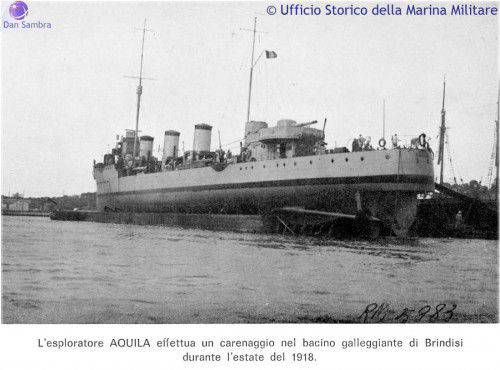
I will allow a little distraction and describe in more detail one rescue operation, during which the cruiser Aquila distinguished itself. It happened in the interwar period. On the morning of June 6, 1928 not far from the Pula naval base, reconnaissance Aquila, light cruiser Brindisi (Brindisi) and several other ships conducted exercises to counter submarines (F-14 and F-15 submarines played the role of the enemy). In the 08-40, the F-14 submarine that made the ascent maneuver collided with the destroyer “Giuseppe Missori”: she was under the bow. This happened 7-miles west of San Giovanni in Pelago (Brioni Island, at the Pula naval base).
Aquila was among the first to rush to the place where the submarine sat on the ground, and took part in the rescue of 23 survivors from 27 crew members who were in the aft compartment. During the rescue Aquila with its anchor chain caught the sunken submarine, it began to demolish to the side and she got a list in about 70 degrees. Only thanks to the GA-30 X-NUMX-ton pontoon released from Poole base - the F-145 was released: the cable was lowered from the pontoon and the anchor chain was uncoupled from the submarine. The divers lifted the boat from the depth of 14 meters through 37 hours after the incident, but the submariners could not be saved: the entire crew died from poisoning with chlorine fumes released from the flooded battery, already during the lifting of the boat.
October 11 1937 Aquila was secretly sold to Spanish nationalists (Marina nazionalista spagnola), who by then had only one destroyer: Velasco (V). Important: the destroyer Velasco was a four-pipe ship.
The Spanish renamed Aquila Melilla (Melilla) - in honor of the Spanish city and port on the Mediterranean coast of Africa, and again began to be considered a destroyer.
For political reasons, the Italians were in no hurry to exclude the cruiser Aquila from the Italian Navy (Regia Marina), and therefore, some time after it was sold to the Spaniards, they managed to maintain the appearance that the Aquila still served under the Italian flag. In order to increase confusion, the Spaniards at first equipped the three-pipe Melilla (formerly Aquila) with another (fake) pipe made of wood and it began to remotely resemble the Francoist destroyer Velasco.
And in order to hide the fact of the sale of warships to Spanish rebels, Melilla (formerly Aquila) often appeared under the name Velasco-Melilla.
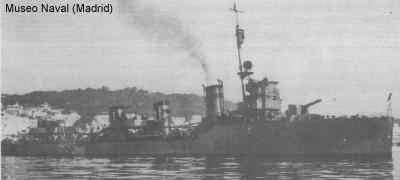
During the Civil War, the Franks, like the British, began to paint their warships in a light gray color, and pipe straps were applied to the upper part of the pipes: black bands. Melilla (formerly Aquila) was painted the same way. By that time, Melilla (formerly Aquila) was considered obsolete and began to be used as an escort destroyer for solving auxiliary tasks: in particular, it carried patrol and convoy service. That was until August 1938, until fate brought him to the Republican destroyer Jose Luiz Diez / JD.
20 August, after the completion of repair work in Le Havre, in northern France, the destroyer “José Luis Diaz” tried to break into the Spanish port of Carthage, in the Mediterranean, and on the way sank the 2 trailer of the Franco. He was met by a light cruiser Mendes Nunes (Mendes Nunes) with a destroyer division.
It is worth noting that the “Diaz” referred to the destroyers of the “Churruk” type (Churruca-class destroyer), which were built with an eye to the English “T” type destroyers.
The former “Diaz” captain was removed for non-compliance, and after the repair, Juan Antonio Castro was appointed to his position. Since the journey was a long one, and the times were turbulent, the commandant “Castro”, who took command, decided to use a military trick: using the external similarity of his ship with the English destroyers, pass off the Republican “Diaz” as the British leader of destroyers “HMS Grenville” (His Majesty’s ship “Grenville” ) The choice for “Grenville” fell not by chance: at that time he headed the 20th flotilla destroyers of the Mediterranean fleet.
Captain “Diaz” approached the masquerade seriously. To do this, the destroyer was marked with the number of the pennant (alphanumeric designation) D19 and the natrubnye stamps corresponding to the flagship of the division of the Mediterranean fleet: 2 black stripes on the front tube. The ship raised the flag of the Royal Navy of Great Britain, and even from a single 76,2-mm guns tried to create a fake 120-mm gun type Mark IX.
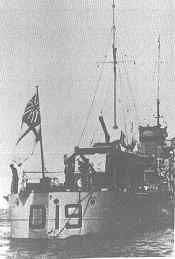
disguised as His Majesty's “Grenville” ship
REFERENCE. The D19 pennant number was assigned to another British destroyer: “HMS Malcolm” (His Majesty's ship “Malcolm”), which was part of the 1920 destroyers flotilla (natrubnaya mark - one white stripe), and then until September 5 was in reserve as leader of the fleet of the reserve fleet. The “Grenville” leader (type “H”) was matched by a different prefix and a different number, namely H1939.
Unfortunately, the trick of “Comandante Castro” failed: the “disguised secret” was revealed by the intelligence of Franco (espionaje nacional), and on the night from 26 to 27 in August 1938 of the year, on the approach to Gibraltar, José Luis Díaz was waiting for the flagship of the Franco fleet : Heavy cruiser “Canarias” (Canarias). According to Spanish sources, the Canarias was accompanied by the light cruisers Navarra (Navarra) and Almirante Server (Almirante Cervera), the destroyer Huesca, the Jupiter gunner and the 2 of the Romanian order: Melilla (formerly Aquila) and Falco. As a result of the clash, “Diaz” was hit by an 203-mm projectile, which caused extensive damage to the interior, and at dawn 27 in August, the destroyer was forced to take refuge in the port of Gibraltar, which belongs to the British crown.
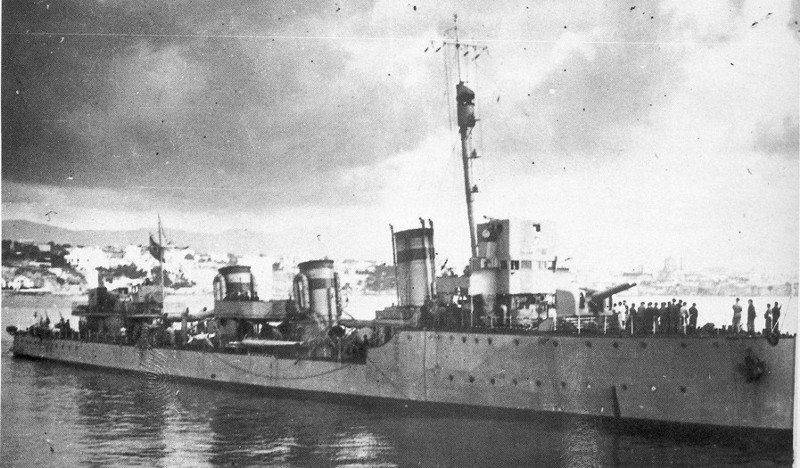
It seems that “our customers”
After the end of the war, Melilla (formerly Aquila) was used for training purposes, and in 1950, he was withdrawn from service in the fleet, disarmed and scrapped. AT stories Spanish Navy ship Melilla (formerly Aquila) appears as a destroyer of the type “Ceuta”.
sparrowhawk. Captain Vrungel loved to say: “As you call a yacht, it will float as well.” And often, along with the names of the ships received and slogans.
Name. Sparviero: A sparrowhawk or small hawk is a species of birds of prey from the family of hawks. It is a small bird of prey with short and wide wings, as well as a long tail, which helps it to maneuver among the trees.
Motto. It so happened that during the First World War the cruiser Sparviero was part of the 2 reconnaissance group and commanded by Ferdinand of Savoy (1884-1963) with the rank of capitano di vascello (captain of the 1-rank).
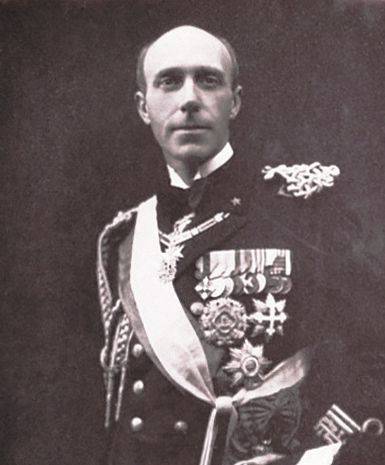
Ferdinand of Savoy, 3 Duke of Genoa
The noble prince of Udine, the future duke of Genoa, and so on and on, was an educated man (naval academy), an experienced soldier (participant of the Italian-Turkish war 1912 of the year) and a skilled sailor (made a world tour on the Calabria armored cruiser).
And so it happened that Gabriele D'Annunzio (Italian writer, poet, playwright and politician) during a plane flight over the Sparviero cruiser as a sign of special favor with his commander came up with a Latin motto for the ship: “Cursu praedam inausum audet”. I am not strong in Latin and translated like this: "The trace of the prey will always find." Soon, the rest of the project’s ships received their mottos: “Aquila” received the motto “Alarum verbera nosce” (Hearing the Wings of Wings); “Falco” - “Piombo sulla preda” (First to rush on prey); “Nibbio” - “Milvus praedam rapiet” (Kite grab prey).
29 September 1917, the Sparviero, with a group of destroyers Abba, Acerbi, Orsini, Stocco, Ardente, Ardito and Audace went to sea to provide fire support and cover the squadron of aircraft that took off for the bombardment of the Austro-Hungarian naval base, located in the city of Pula (Pola).
After the disaster at Caporetto (October 1917), the Italian troops were forced to retreat, and Sparviero and Aquila were relocated to Venice, and they remained there until March 15 1918.
During this period, Sparviero actively participated in the defense of the Venetian lagoon and in operations to support MAS-type torpedo boats during operations off the enemy coast. In May, 1918 Sparviero was relocated to Brindisi (Brindisi) and participated in active hostilities in the Lower Adriatic until the end of the First World War.
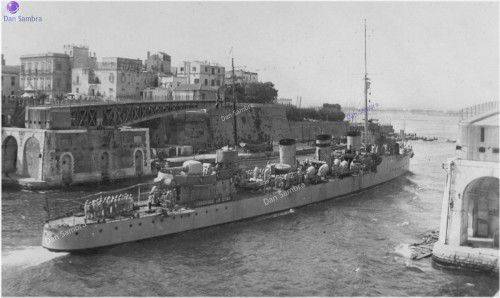
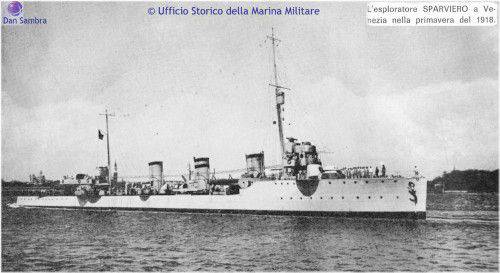
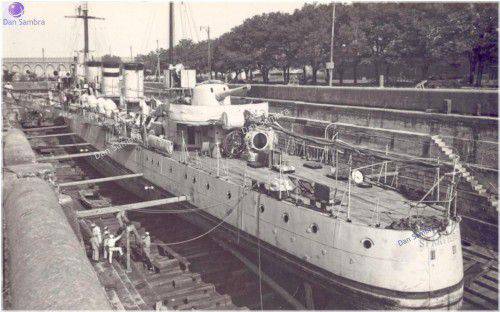
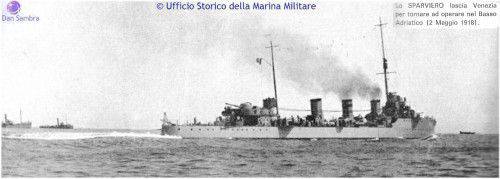
After the war, Sparviero arrived in Naples for urgent repairs, and in October 1919 (under the command of another commander) together with his twin brother Nibbio sailed to Constantinople (the name of Istanbul from 1453 to 1930), where they traveled along East for about a year ( The Levant coast of the Mediterranean, and sailed in the waters of the Black Sea, in close proximity to Russian and Romanian ports.
It was during this period that negotiations began between Italy and Romania, the subject of which was the transfer by Italy of Sparviero and Nibbio to the Romanian Royal Navy. As I wrote earlier, the term “resale” is used in some Romanian sources. 1 June 1920 on the Sparviero cruiser was raised the Romanian flag (pennant) and it was renamed Marešti (Mărăti). According to the Romanian classification, Mărăști was again considered the destroyer. In addition to the new name, the destroyer Mărăşti received a distinctive on-board pattern (emblem): Ace of diamonds.
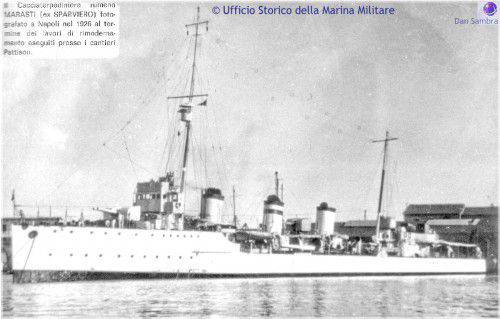
During World War II it was used mainly as an escort destroyer, to accompany convoys from the Bosphorus to the Crimea.
26 June 1941 of the Year, together with Regina Maria, participated in repelling the attack of the ship’s attack group from the 4's Black Sea Fleet ships to Constanza, during which the destroyer leader “Moscow” died.
Some sources claim that the time of one of his missions (July 1943 of the year), the destroyer Mărăști damaged (sank) the Soviet submarine Medusa M-31 of the “Baby” type. I found the following data about attacks on the M-31 submarine:
- 04.10.1941, in the outer roadstead of Constanta: exploded on one of the mine defenders of the Romanian minefield;
- 16.08.1942, on the approaches to Odessa: during a counterattack, the patrol ship dropped at the intended location of the 8 submarine depth charge bombs;
- 17.12.1942, in Zhebriyana Bay (Odessa region, Kiliya region): ships from the escort escort dropped more than 40 depth charges, after which the enemy observed signs of submarine death.
29 August 1944, the destroyer Mărăști, along with other Romanian ships, was captured by the Soviet troops in Xanmus, September 5, the USSR’s naval flag was raised on it, September 1944 was introduced into the Black Sea fleet, and 14 1944 was put 14 in September, September September 1944 was introduced into the Black Sea fleet, and XNUMX September XNUMX was introduced by the XNUMX. ”And attributed to the subclass of destroyers.
Since the destroyer Mărăști did not undergo both major and current repairs (the last documented repairs were made in Naples, in 1919) and were not fully equipped with spare parts, tools and equipment (SPTA), the combat effectiveness of the adopted Romanian ships caused The leadership of the Soviet Navy has reasonable doubts. Therefore, the Romanian destroyers were excluded from service and transferred to the detachment, soon renamed the 78 Brigade of training ships, and from October 20 1944 “Dexterous” began to appear as “Board No. 22”.
06 November 1945 of the Year “Board No. 22 / Light” was expelled from the Navy of the USSR, 12 of October 1945 was returned to Romania (which became a socialist republic), where it was first introduced as the destroyer “Mărăşti”, then a whole chain of renames was introduced: “DXNUMUM”: D2: D1948 , "D12" with 1951, "D4" with 1956 and again "D12" from 1959. In 1963, he was expelled from the Romanian Navy and disarmed, and a year later he was scrapped.
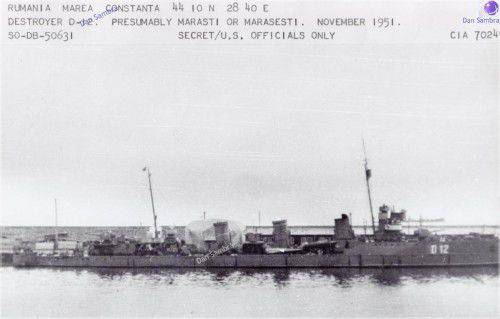
very secret, for official use only,
not for foreign citizens
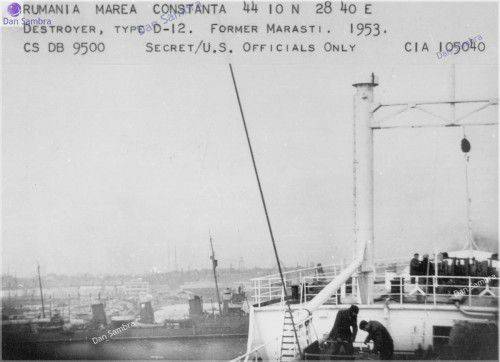
Photo from the archive of the CIA with the stamp “SECRET / US OFFICIALS ONLY”
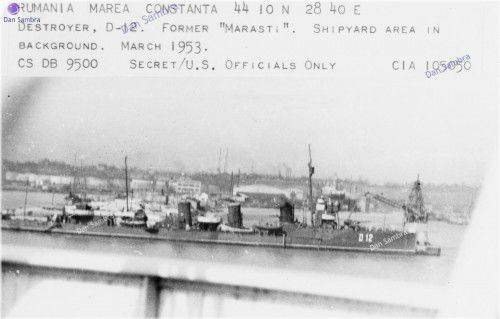
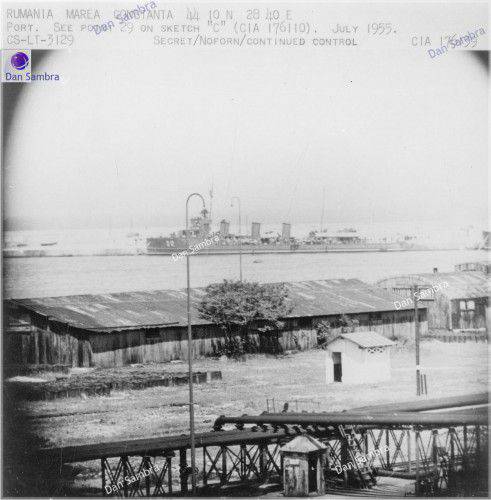
Photo from the archive of the CIA with the stamp “SECRET / NOFORN”: very secret, hide even from allies
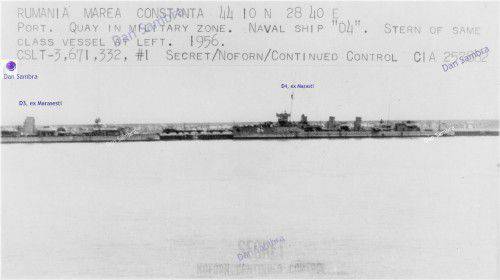
Photo from the archive of the CIA with the stamp “SECRET / NOFORN”
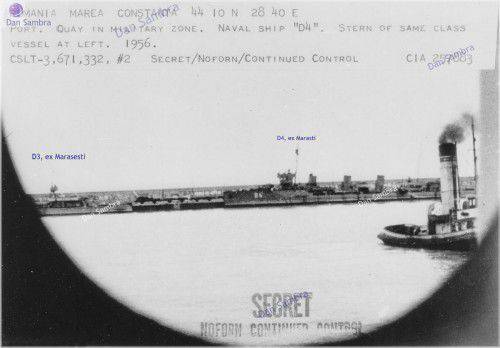
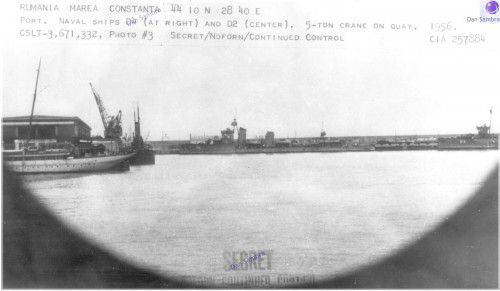
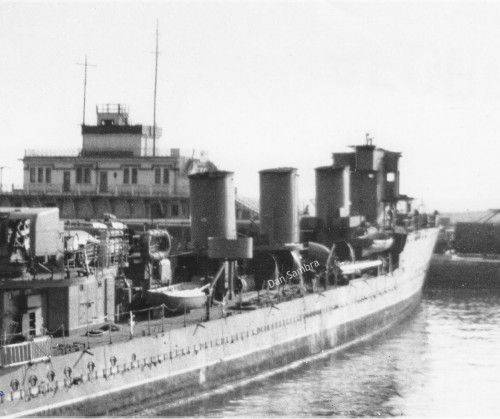
In the next article I will talk about the last two ships built in this series: the cruisers Nibbio and Falco.
Information sources:
Franco Bargoni “Esploratori Fregate Corvette ed Avvisi Italiani, 1861-1968”; Edizioni Chillemi “Regia marina italiana, 1860 - 1946”; “Almanacco Storico delle Navi Militari Italiane, 1861-1995”; F. Favre “La Marina nella Grande Guerra. Le operazioni navali, aeree, subacquee e terrestri in Adriatico ”; PP Ramoino “Gli esploratori italiani 1919-1938”; RB La Racine “In Adriatico dopo la vittoria“ Conway Maritime Press “All the World's Fighting Ships” 1906-1921; Cmdr Neculai Padurariu "Nave romanesti sub pavilion sovietic" Nicolae Koslinski, Raymond Stanescu “Marina Romana in Al Doilea Razboi Mondial: 1939-1945” S. S. Berezhnoy “Ships and ships of the Navy of the USSR” http://ro.wikipedia.org http: //it.wikipedia.org http://es.wikipedia.org http://en.wikipedia.org http://win.storiain.net http://flot.com http://tsushima.su http: //www.worldwar2.ro http://www.naviecapitani.it http://forum.worldofwarships.eu http://forum.worldofwarships.eu http://www.armada.mde.es http: // www .kbismarck.com http://www.marina.difesa.it http://www.regiamarinaitaliana.it http://www.marinarii.ro
To be continued ...
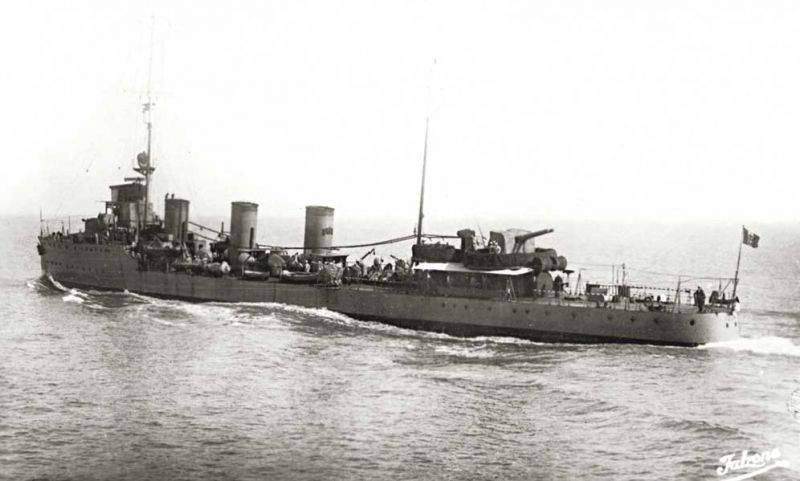
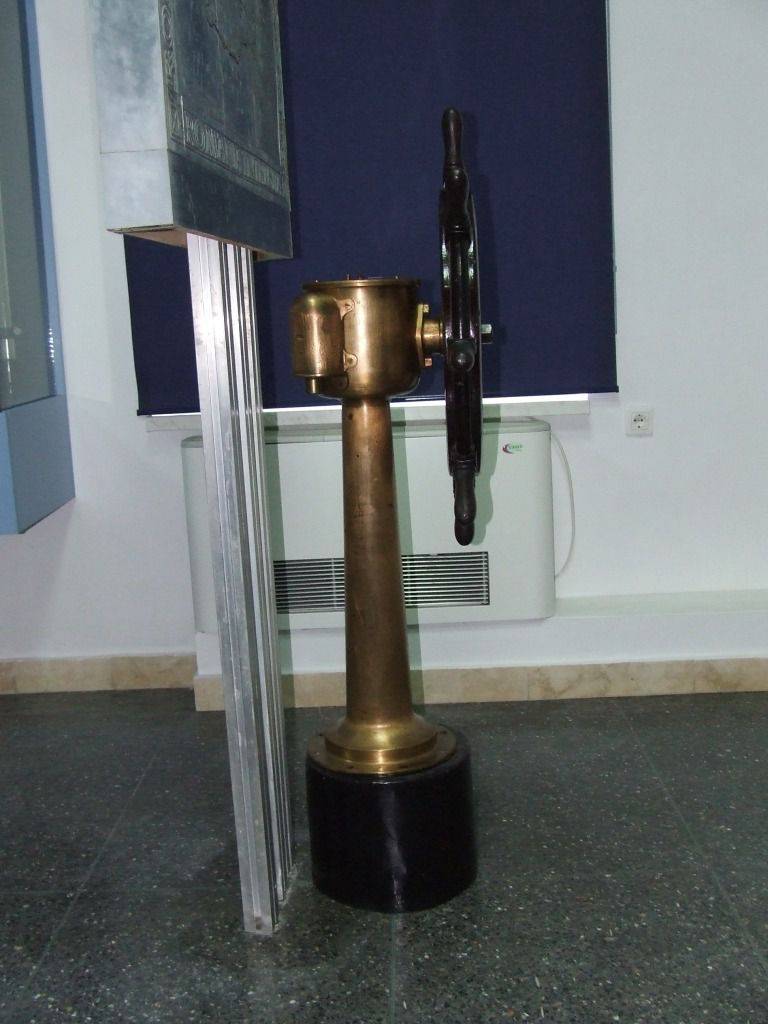
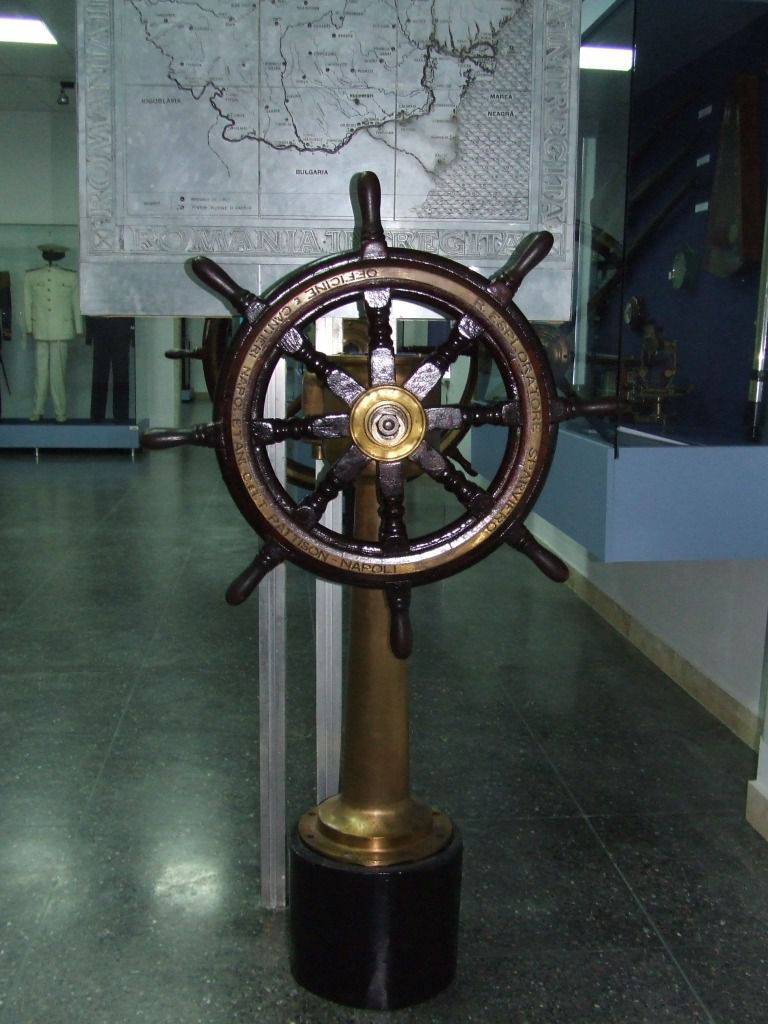
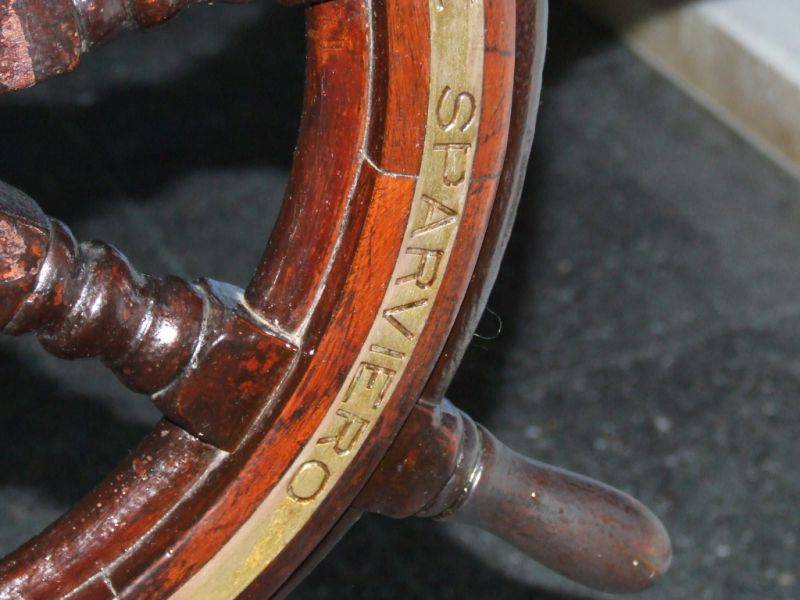
Information